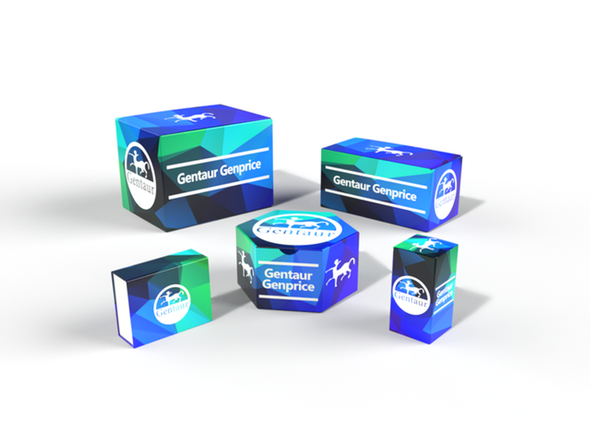Description
SHOX Antibody | 25-126 | Gentaur UK, US & Europe Distribution
Host: Rabbit
Reactivity: Human
Homology: N/A
Immunogen: Antibody produced in rabbits immunized with a synthetic peptide corresponding a region of human SHOX.
Research Area: Transcription
Tested Application: E, WB
Application: SHOX antibody can be used for detection of SHOX by ELISA at 1:312500. SHOX antibody can be used for detection of SHOX by western blot at 1 μg/mL, and HRP conjugated secondary antibody should be diluted 1:50, 000 - 100, 000.
Specificiy: N/A
Positive Control 1: Cat. No. XBL-10123 - Fetal Brain Tissue Lysate
Positive Control 2: N/A
Positive Control 3: N/A
Positive Control 4: N/A
Positive Control 5: N/A
Positive Control 6: N/A
Molecular Weight: 32 kDa
Validation: N/A
Isoform: N/A
Purification: Antibody is purified by peptide affinity chromatography method.
Clonality: Polyclonal
Clone: N/A
Isotype: N/A
Conjugate: Unconjugated
Physical State: Liquid
Buffer: Purified antibody supplied in 1x PBS buffer with 0.09% (w/v) sodium azide and 2% sucrose.
Concentration: batch dependent
Storage Condition: For short periods of storage (days) store at 4˚C. For longer periods of storage, store SHOX antibody at -20˚C. As with any antibody avoid repeat freeze-thaw cycles.
Alternate Name: SHOX, GCFX, PHOG, SHOXY, SS
User Note: Optimal dilutions for each application to be determined by the researcher.
BACKGROUND: This gene belongs to the paired homeobox family and is located in the pseudoautosomal region 1 (PAR1) of X and Y chromosomes. Defects in this gene are associated with idiopathic growth retardation and in the short stature phenotype of Turner syndrome patients. This gene is highly conserved across species from mammals to fish to flies.This gene belongs to the paired homeobox family and is located in the pseudoautosomal region 1 (PAR1) of X and Y chromosomes. Defects in this gene are associated with idiopathic growth retardation and in the short stature phenotype of Turner syndrome patients. This gene is highly conserved across species from mammals to fish to flies. Alternatively spliced transcript variants encoding different isoforms have been noted for this gene.






